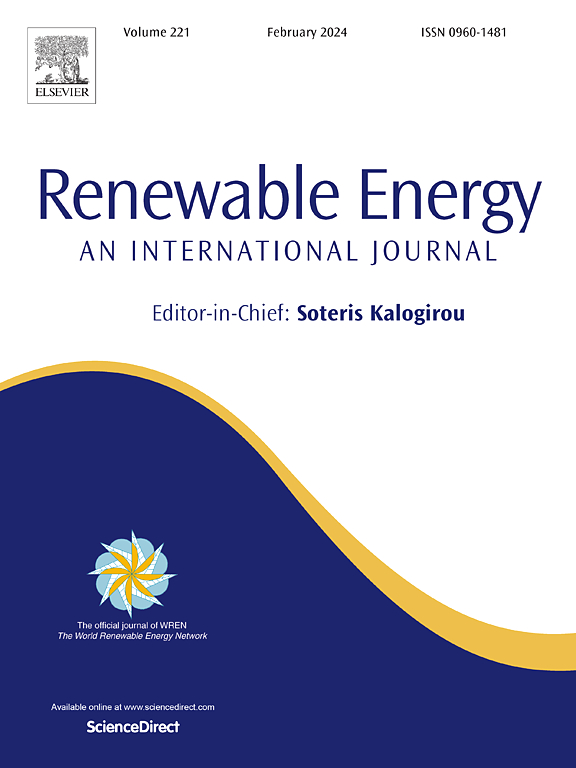基于改进深度强化学习的带软开点、存储单元和电动汽车的有源配电系统频率调节
IF 9.1
1区 工程技术
Q1 ENERGY & FUELS
引用次数: 0
摘要
作为实现智能电网概念和减少碳排放的有效途径,可再生能源与存储设备的整合正在增加。然而,随着对高功率充电的需求不断增长,随着电动汽车(EV)的普及,特别是在随机能源存在的情况下,电网面临着重大挑战。因此,需要强有力的调节策略来管理配电系统的不确定性,特别是在频率调节方面,变得越来越重要。通过多终端软开放点(SOPs)互联的配电系统正在向高度可控、集成和灵活的体系结构发展。通过结合混合氢能源存储的专用终端,性能进一步提高。此外,还探索了车辆到电网(V2G)和电网到车辆(G2V)运营的整合。为了有效管理这些操作框架,提出了一种基于深度确定性策略梯度(DDPG)算法的改进深度强化学习(RL)策略。采用多智能体深度强化学习,基于模型预测控制(MPC)框架内的二次优化函数衍生的奖励函数,每个智能体生成多个控制信号。为了确保最优控制动作波形并提高系统性能,每个DDPG深度RL代理的控制动作值通过其观测值、积分和导数进行缩放,并通过滤波器进行集成。当将提出的改进的深度RL策略与组件一起应用时,频率变化率和功率传输波动率在× 10−8范围内实现了最小的稳态误差,并显着抑制了超调和欠调水平。这种方法有效地维护了系统性能,优于其他模拟场景。本文章由计算机程序翻译,如有差异,请以英文原文为准。
Modified deep reinforcement learning for frequency regulation in active distribution systems with soft open points, storage units and electric vehicles
As an effective approach to achieving the smart grid concept and reducing carbon emissions, the integration of renewable energy sources and storage devices is increasing. However, with the growing demand for high-power charging, the electrical grid faces significant challenges as electric vehicle (EV) adoption rises, particularly in the presence of stochastic energy sources. Consequently, the need for robust regulation strategies to manage distribution system uncertainties, especially in frequency regulation, is becoming more critical. Distribution systems, interconnected through multi-terminal soft open points (SOPs), are evolving into highly controllable, integrated, and flexible architectures. Performance is further enhanced by incorporating a dedicated terminal for hybrid hydrogen energy storage. Additionally, the integration of vehicle-to-grid (V2G) and grid-to-vehicle (G2V) operations has been explored. To effectively manage these operational frameworks, a modified deep reinforcement learning (RL) strategy based on the deep deterministic policy gradient (DDPG) algorithm is proposed. Multi-agent deep RL is employed, generating multiple control signals per agent based on reward functions derived from a quadratic optimization function within the model predictive control (MPC) framework. To ensure an optimal control action waveform and enhance system performance, each DDPG deep RL agent's control action value is scaled by its observation value, integral, and derivative, integrated through a filter element. When applying the proposed modified deep RL strategy alongside the components, the rate of frequency change and power transfer fluctuations achieved minimal steady-state errors in the range of × 10−8, with significantly damped overshoot and undershoot levels. This approach effectively maintains system performance, outperforming other simulated scenarios.
求助全文
通过发布文献求助,成功后即可免费获取论文全文。
去求助
来源期刊

Renewable Energy
工程技术-能源与燃料
CiteScore
18.40
自引率
9.20%
发文量
1955
审稿时长
6.6 months
期刊介绍:
Renewable Energy journal is dedicated to advancing knowledge and disseminating insights on various topics and technologies within renewable energy systems and components. Our mission is to support researchers, engineers, economists, manufacturers, NGOs, associations, and societies in staying updated on new developments in their respective fields and applying alternative energy solutions to current practices.
As an international, multidisciplinary journal in renewable energy engineering and research, we strive to be a premier peer-reviewed platform and a trusted source of original research and reviews in the field of renewable energy. Join us in our endeavor to drive innovation and progress in sustainable energy solutions.
 求助内容:
求助内容: 应助结果提醒方式:
应助结果提醒方式:


